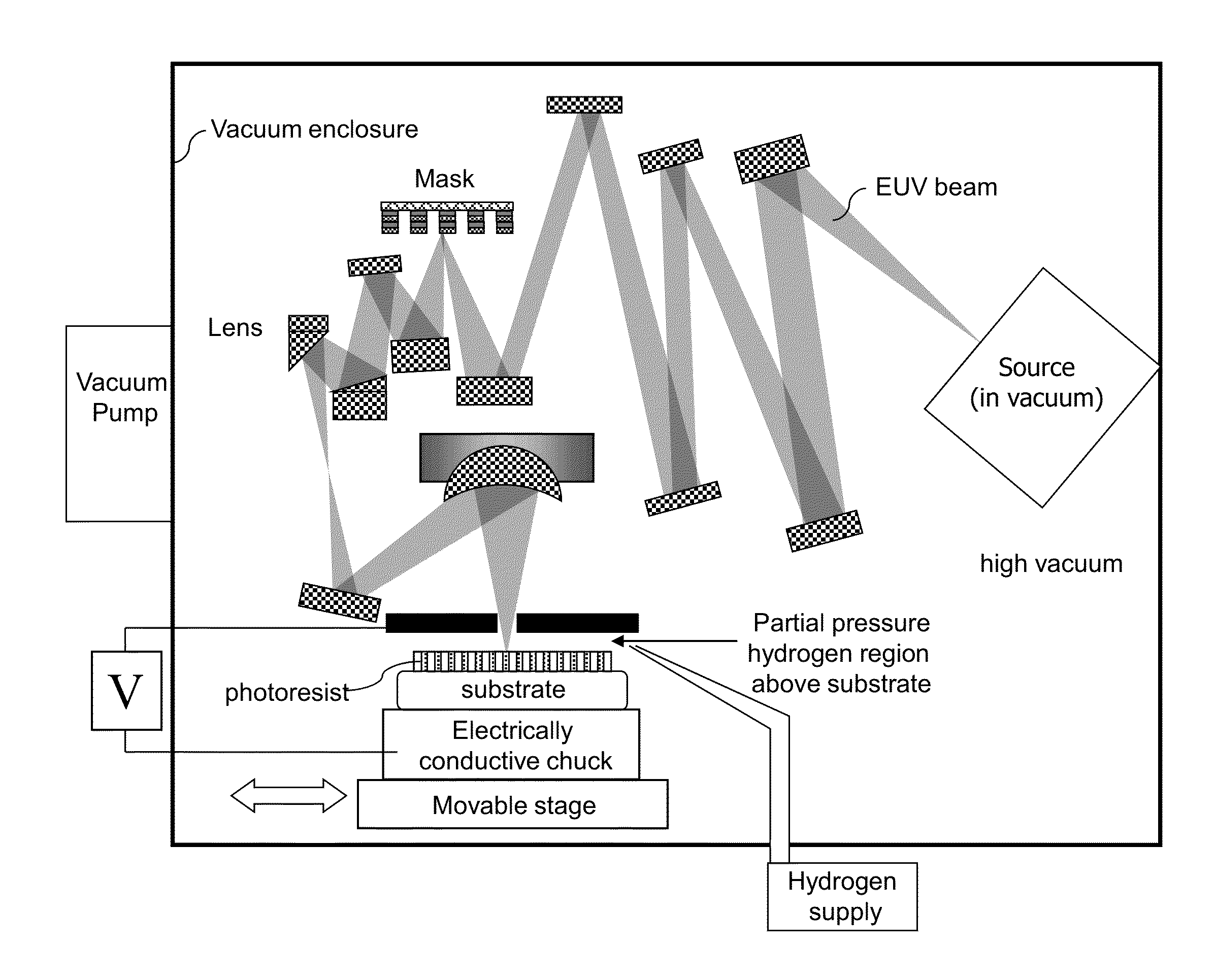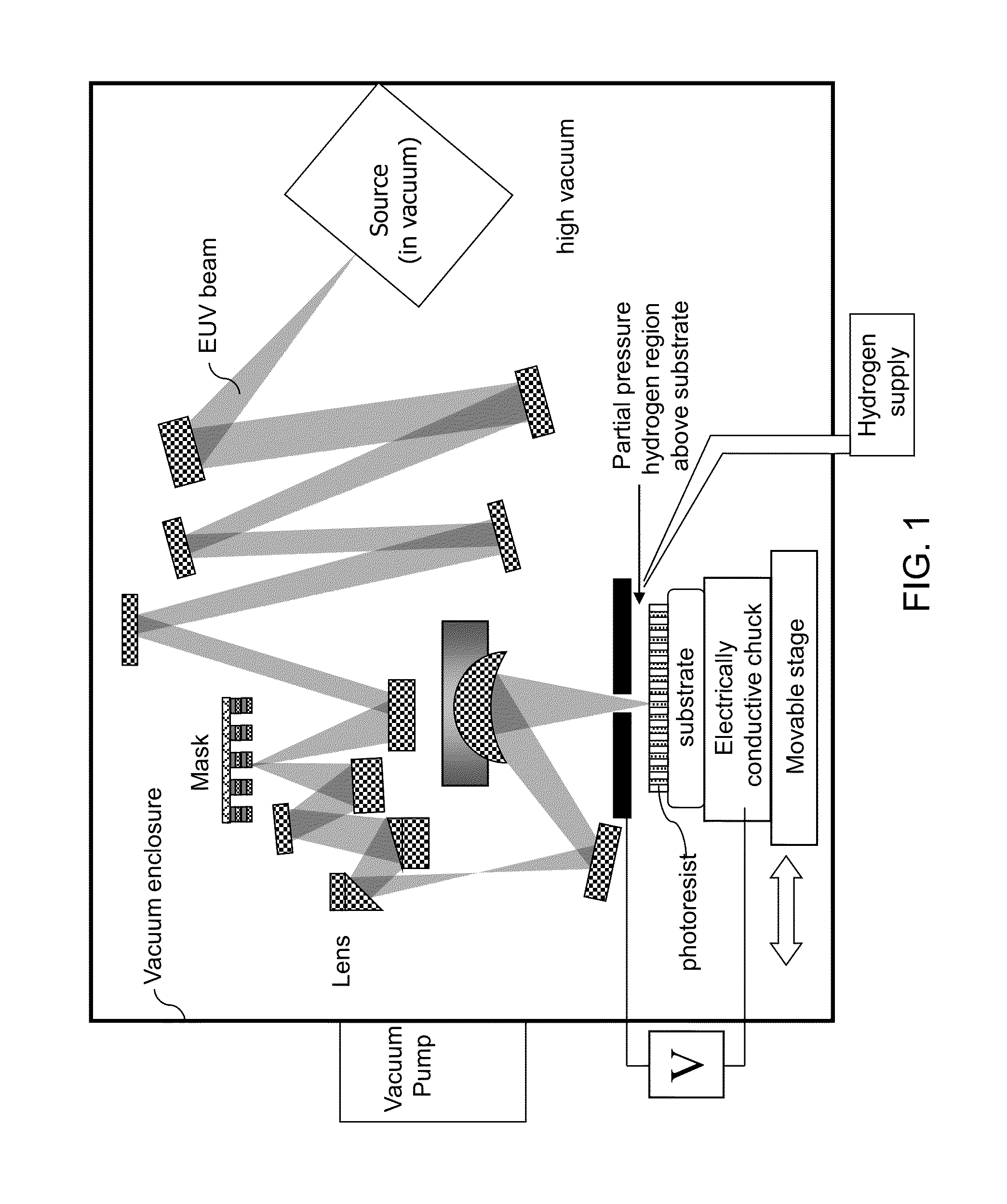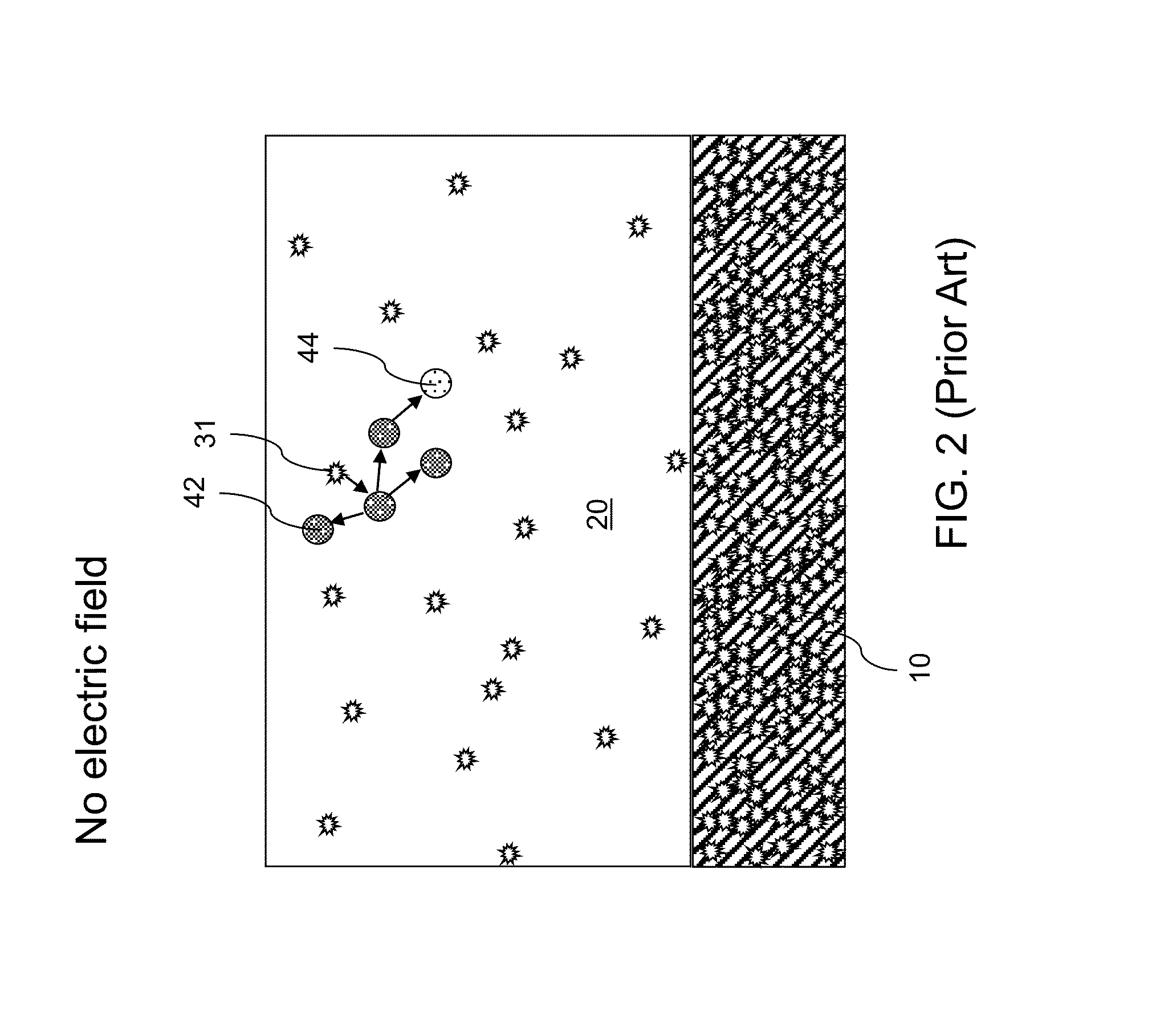Amplification Method For Photoresist Exposure In Semiconductor Chip Manufacturing
a technology of photoresist and semiconductor chip, which is applied in the field of exposing an extreme ultraviolet (euv) photoresist, can solve the problems of insufficient euv lithography to achieve the required utilization performance, feature edge roughness, and minimum feature size resolution, so as to reduce image blurring, improve image resolution, and reduce lateral diffusion
- Summary
- Abstract
- Description
- Claims
- Application Information
AI Technical Summary
Benefits of technology
Problems solved by technology
Method used
Image
Examples
Embodiment Construction
[0011]As stated above, the present disclosure relates to a method of exposing an extreme ultraviolet (EUV) photoresist, and an apparatus for implementing the same. Aspects of the present disclosure are now described in detail with accompanying figures. Throughout the drawings, the same reference numerals or letters are used to designate like or equivalent elements. The drawings are not necessarily drawn to scale.
[0012]During conventional extreme ultraviolet (EUV) lithography, a majority of secondary electrons is lost in non-imaging layers due to poor absorption in an imaging layer, i.e., the EUV photoresist layer. The loss of the secondary electrons in the non-imaging layers is responsible for the requirement for a high exposure dose in conventional EUV lithography tools.
[0013]According to an embodiment of the present disclosure, a direct current (DC) electrical bias, an alternating current (AC) electrical bias, or a combination of a DC electrical bias and an AC electrical bias is a...
PUM
 Login to View More
Login to View More Abstract
Description
Claims
Application Information
 Login to View More
Login to View More - R&D
- Intellectual Property
- Life Sciences
- Materials
- Tech Scout
- Unparalleled Data Quality
- Higher Quality Content
- 60% Fewer Hallucinations
Browse by: Latest US Patents, China's latest patents, Technical Efficacy Thesaurus, Application Domain, Technology Topic, Popular Technical Reports.
© 2025 PatSnap. All rights reserved.Legal|Privacy policy|Modern Slavery Act Transparency Statement|Sitemap|About US| Contact US: help@patsnap.com



